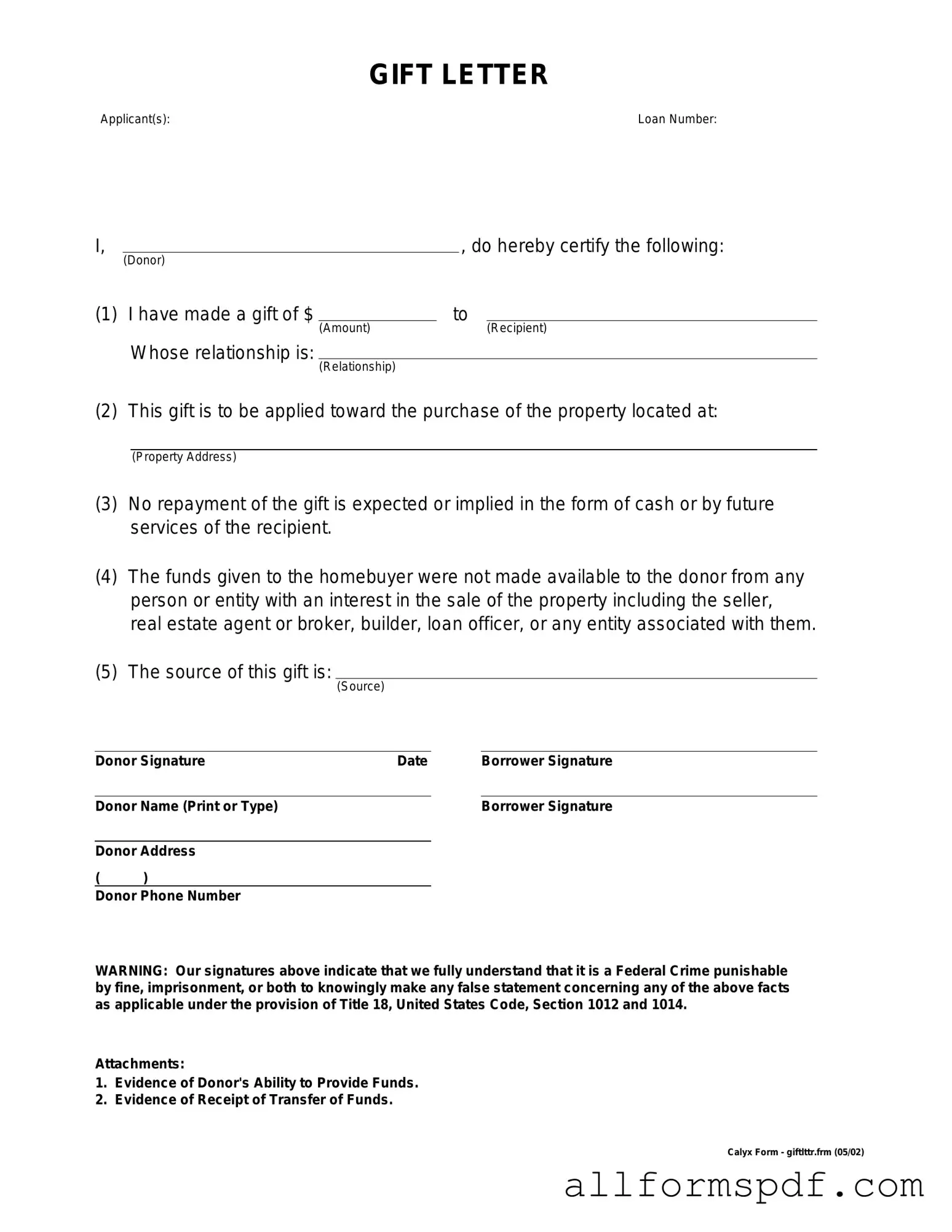When filling out a Gift Letter form, many individuals unknowingly make mistakes that can lead to complications later on. One common error is failing to provide complete information about the donor. It's essential to include the donor's full name, address, and relationship to the recipient. Omitting any of these details can raise questions about the legitimacy of the gift.
Another frequent mistake is not clearly stating the amount of the gift. The Gift Letter should specify the exact dollar amount being gifted. If this is left vague or missing, it can create confusion and may even lead to delays in processing. Clarity is key in ensuring that all parties understand the nature of the transaction.
Many people also overlook the importance of signatures. Both the donor and the recipient must sign the Gift Letter. Without these signatures, the document lacks validity. This step is crucial for confirming that both parties agree to the terms of the gift.
Additionally, some individuals forget to date the form. Including the date is important as it provides context for when the gift was made. This can be particularly relevant for tax purposes and for any future financial documentation.
Another mistake is neglecting to mention whether the gift is a loan or a true gift. If there are any expectations for repayment, this must be clearly stated in the letter. Failing to do so can lead to misunderstandings and potential legal issues down the line.
People often assume that a simple statement of intent suffices. However, the Gift Letter should also outline that the funds are not expected to be repaid. This reassurance can help prevent any future disputes regarding the nature of the gift.
Lastly, individuals may not keep a copy of the completed Gift Letter. It’s advisable to retain a copy for personal records. This can be beneficial for future reference, especially if any questions arise regarding the transaction.
